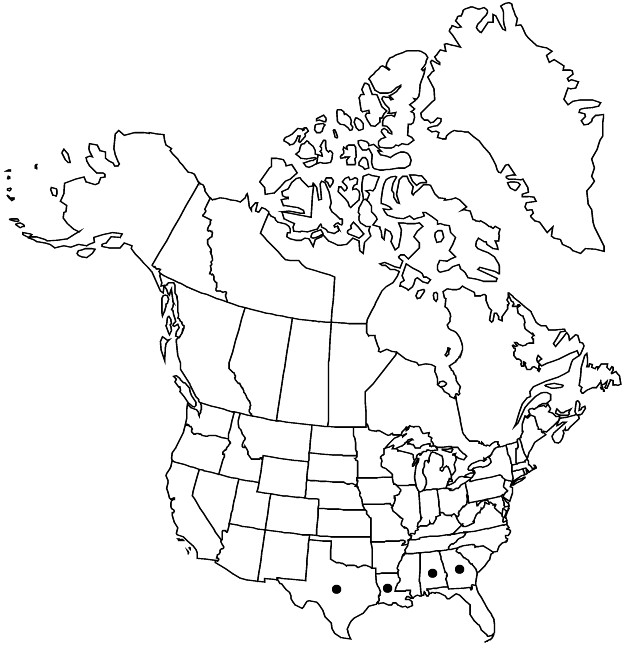Difference between revisions of "Spergularia echinosperma"
Arch. Naturwiss. Landesdurchf. Bohmen 4: 867. 1881.
FNA>Volume Importer |
imported>Volume Importer |
||
| (4 intermediate revisions by one other user not shown) | |||
| Line 8: | Line 8: | ||
}} | }} | ||
|common_names= Bristle-seed sand-spurrey | |common_names= Bristle-seed sand-spurrey | ||
| + | |special_status={{Treatment/ID/Special_status | ||
| + | |code=I | ||
| + | |label=Introduced | ||
| + | }} | ||
|basionyms= | |basionyms= | ||
|synonyms= | |synonyms= | ||
| Line 24: | Line 28: | ||
|elevation=0-20+ m | |elevation=0-20+ m | ||
|distribution=Ala.;Ga.;La.;Tex.;Europe. | |distribution=Ala.;Ga.;La.;Tex.;Europe. | ||
| + | |introduced=true | ||
|tables= | |tables= | ||
|references= | |references= | ||
| Line 32: | Line 37: | ||
-->{{#Taxon: | -->{{#Taxon: | ||
name=Spergularia echinosperma | name=Spergularia echinosperma | ||
| − | |||
|authority=Celakovský | |authority=Celakovský | ||
|rank=species | |rank=species | ||
| Line 47: | Line 51: | ||
|publication title=Arch. Naturwiss. Landesdurchf. Bohmen | |publication title=Arch. Naturwiss. Landesdurchf. Bohmen | ||
|publication year=1881 | |publication year=1881 | ||
| − | |special status= | + | |special status=Introduced |
| − | |source xml=https:// | + | |source xml=https://bitbucket.org/aafc-mbb/fna-data-curation/src/2e0870ddd59836b60bcf96646a41e87ea5a5943a/coarse_grained_fna_xml/V5/V5_35.xml |
|subfamily=Caryophyllaceae subfam. Polycarpoideae | |subfamily=Caryophyllaceae subfam. Polycarpoideae | ||
|genus=Spergularia | |genus=Spergularia | ||
Latest revision as of 22:10, 5 November 2020
Plants annual, delicate, 5–15 cm, stipitate-glandular throughout. Taproots slender. Stems erect to ascending, simple to diffusely branched proximally and distally; main stem occasionally prostrate, 0.2–1.5 mm diam. proximally. Leaves: stipules inconspicuous, silvery to dull tan, broadly triangular, 1.4–2.4 mm, shorter than wide, apex acuminate; blade linear, 0.5–3.5 cm, somewhat fleshy, apex blunt to apiculate; axillary leaf cluster usually absent. Cymes commonly 4–8+-compound. Pedicels reflexed and oriented to 1 side in fruit. Flowers: sepals connate 0.2–0.3 mm proximally, lobes 1–3-veined, lanceolate to ovate, 2.5–3.6 mm, to 4 mm in fruit, margins 0.1–0.5 mm wide, apex rounded; petals white to pink or rosy, lanceolate, 0.4–0.6 times as long as sepals; stamens 1–4(–5); styles 0.3–0.4 mm. Capsules greenish to tan, 2.8–4 mm, 0.9–1.4 times as long as sepals. Seeds reddish brown to blackish, silver tinged, with submarginal groove, pyriform, ± compressed, 0.5–0.7(–0.8) mm, shiny, slightly roughened, with dense, gland-tipped papillae and appearing echinate (30×); wing usually absent, whitish to reddish brown, 0.1–0.2 mm wide, margins irregular and not papillate. 2n = 18, 36 (both Europe).
Phenology: Flowering spring.
Habitat: Dunes, clay flats, sandy river banks
Elevation: 0-20+ m
Distribution

Introduced; Ala., Ga., La., Tex., Europe.
Discussion
Selected References
None.